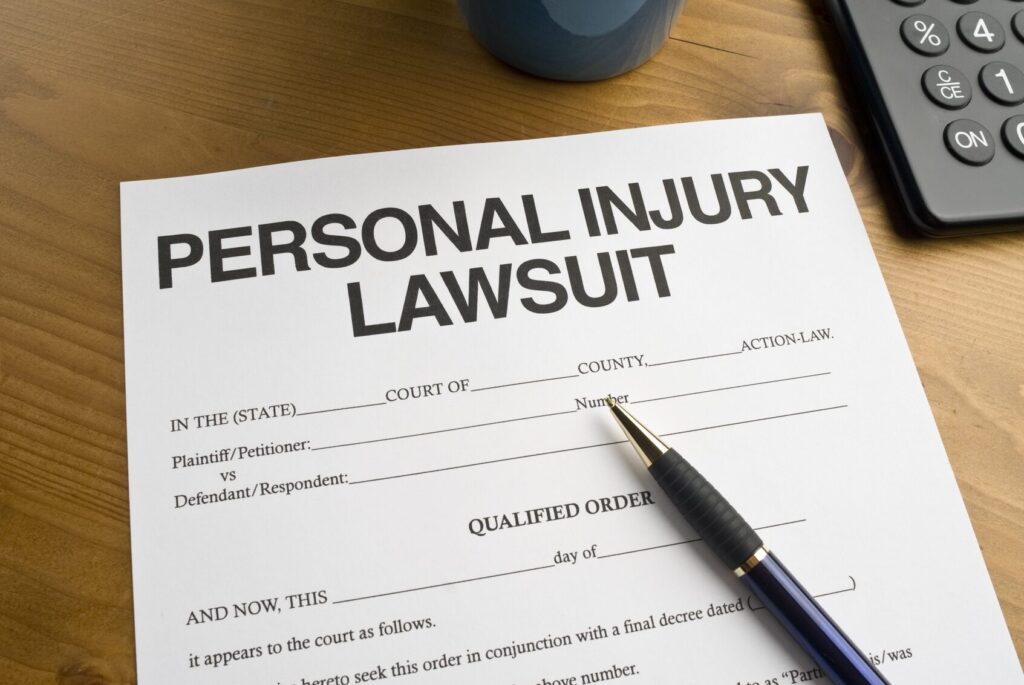Discover the most common health issues cited in personal injury lawsuits. Learn how injuries are evaluated, treated, and handled legally with expert insights and FAQs.
Introduction
In the realm of personal injury law, health issues form the backbone of most claims. Whether from a car accident, slip and fall, or workplace mishap, victims often suffer physical and psychological harm. Understanding the typical health problems in personal injury lawsuits is essential for victims, attorneys, and even insurers. It helps determine the extent of damages, necessary treatments, and legal outcomes.
This article breaks down the most frequent injuries seen in these cases, how they impact victims’ lives, and what legal implications they carry. If you’re navigating a personal injury claim or simply seeking to understand more about the medical and legal intersections, this guide is for you.
What Are Personal Injury Lawsuits?

Defining a Personal Injury Claim
A personal injury lawsuit is a legal dispute that arises when one person suffers harm from an accident or injury, and someone else might be legally responsible for that harm. These cases can stem from a variety of situations, such as:
- Car accidents
- Medical malpractice
- Workplace injuries
- Slip and fall incidents
- Product liability cases
Legal Relevance of Health Conditions
In every case, health problems play a central role. The severity of an injury, its impact on a person’s ability to work or function normally, and its long-term consequences all help define the settlement or verdict value.
Common Health Problems in Personal Injury Lawsuits
When analyzing typical health problems in personal injury lawsuits, several patterns emerge. Some injuries are more frequently reported due to the nature of common accidents.
1. Soft Tissue Injuries
These are injuries that affect muscles, ligaments, and tendons. Though not always visible on X-rays, soft tissue injuries can be incredibly painful and long-lasting.
Examples include:
- Sprains
- Strains
- Whiplash (especially common in car accidents)
- Contusions
2. Traumatic Brain Injuries (TBI)
TBIs range from mild concussions to severe brain damage. They often result from blows to the head during car accidents, falls, or violent impacts.
Symptoms can include:
- Loss of consciousness
- Headaches
- Memory problems
- Mood swings
- Long-term cognitive impairment
3. Spinal Cord Injuries
Damage to the spinal cord can result in partial or total paralysis. Even minor back injuries can significantly impact mobility and quality of life.
Conditions may include:
- Herniated discs
- Nerve impingement
- Chronic back pain
- Paralysis
4. Fractures and Broken Bones
Fractures are among the most visible and straightforward injuries. However, depending on the bone and its location, recovery can be extensive.
Commonly broken bones include:
- Arms
- Legs
- Ribs
- Hips
- Collarbone
5. Internal Injuries
These injuries are often life-threatening and not always immediately noticeable. They require prompt medical diagnosis and intervention.
Types include:
- Internal bleeding
- Organ damage (lungs, liver, kidneys)
- Punctured lungs
- Abdominal trauma
6. Psychological Injuries
Not all injuries are physical. Many personal injury victims experience severe emotional trauma.
This may manifest as:
- Post-Traumatic Stress Disorder (PTSD)
- Anxiety
- Depression
- Sleep disturbances
7. Burns and Scarring
In accidents involving fires, chemicals, or electrocution, burn injuries are a common concern. These injuries often require multiple surgeries and lead to permanent disfigurement.
Table: Comparison of Health Problems in Personal Injury Lawsuits
| Injury Type | Cause | Typical Recovery Time | Legal Considerations |
|---|---|---|---|
| Whiplash | Rear-end car accident | Weeks to months | Often disputed due to lack of imaging |
| Traumatic Brain Injury | Falls, vehicle collisions | Months to years | High compensation due to life impact |
| Spinal Cord Injury | Falls, high-impact crashes | Lifetime or permanent | Long-term care costs included |
| Bone Fractures | Slips, sports injuries | 6-12 weeks or longer | Easier to prove with X-rays |
| Internal Organ Damage | Blunt force trauma | Variable | Requires expert testimony |
| PTSD/Anxiety | Any traumatic event | Varies, lifelong for some | Psychological evaluations needed |
Medical Documentation in Personal Injury Lawsuits

Why It’s Crucial
Health problems must be medically documented to be considered valid in court. This documentation helps prove the injury’s origin, severity, and the financial burden it imposes.
Key Medical Records Used:
- Hospital records
- Diagnostic imaging (X-rays, MRIs, CT scans)
- Doctor’s notes and evaluations
- Prescription records
- Psychological assessments
These documents provide the evidence necessary to support the claim and determine the damages owed.
Long-Term Health Effects and Rehabilitation
Many typical health problems in personal injury lawsuits don’t end with a hospital visit. Victims often need ongoing care, including:
- Physical therapy: For mobility and strength restoration
- Chiropractic care: For spinal and musculoskeletal issues
- Occupational therapy: To regain work-related functions
- Mental health therapy: Especially crucial for PTSD or anxiety
The cost of these treatments is often included in lawsuit claims, especially in cases of permanent or semi-permanent disability.
The Role of Expert Testimony
In many cases, medical experts are brought in to testify about the extent of the injury, prognosis, and necessity of future treatments. Their role includes:

- Validating the injury
- Explaining complex medical terms
- Supporting claims for compensation
Settlement Value Based on Health Issues
Factors That Influence Settlement Amounts
The value of a personal injury lawsuit heavily depends on the nature and severity of the health issue.
Key elements include:
- Medical expenses (past and future)
- Lost wages
- Pain and suffering
- Loss of earning capacity
- Emotional distress
The more severe and long-lasting the health problem, the higher the potential compensation.
Preventive Measures and Legal Support
Although accidents can’t always be prevented, awareness of health risks and early legal consultation can help victims manage the situation better.
Legal Tips for Victims:
- Seek immediate medical attention after an accident
- Document symptoms and treatments consistently
- Consult with a personal injury attorney quickly
- Avoid settling before full recovery is understood
FAQs: Typical Health Problems in Personal Injury Lawsuits
1. Can whiplash be a permanent injury?
Yes, in some cases, whiplash can cause chronic neck pain and mobility issues that last for years.
2. Are psychological injuries harder to prove in court?
They can be more complex, but documented therapy sessions and expert testimony help validate claims.
3. How soon should I seek medical help after an accident?
Immediately. Delays can weaken your legal claim and health prognosis.
4. Can internal injuries show up days after an accident?
Yes, some internal damage may not be immediately apparent and can worsen over time.
5. Are burn injuries covered under personal injury lawsuits?
Absolutely. Burn injuries, especially severe ones, are commonly cited and compensated.
6. Do I need a medical expert to win my case?
While not mandatory, expert testimony significantly strengthens your case.
7. Can pre-existing conditions affect my claim?
Yes, but only if the injury worsened your existing condition. This is still legally compensable.
8. How is PTSD diagnosed for a personal injury claim?
Diagnosis is made by licensed mental health professionals using DSM-5 criteria.
9. Are chiropractic bills reimbursable in injury cases?
Yes, if the treatment is deemed necessary and related to the injury.
10. What if I didn’t feel hurt until a week after the accident?
Delayed symptoms are common. Always report them to your doctor and attorney as soon as possible.
Conclusion
Personal injury lawsuits are deeply intertwined with health and wellness. The typical health problems in personal injury lawsuits range from minor soft tissue strains to life-altering brain injuries and psychological trauma. These conditions not only influence the legal aspects of a case but also define the personal journey of recovery for the victim.
Legal claims rely heavily on medical documentation, timely diagnosis, and expert validation. Whether you’re a victim, caregiver, or legal professional, understanding these health issues is vital for justice and fair compensation.
By being informed, documenting carefully, and consulting with legal and medical experts, victims can better navigate the aftermath of an injury and secure the support they need.